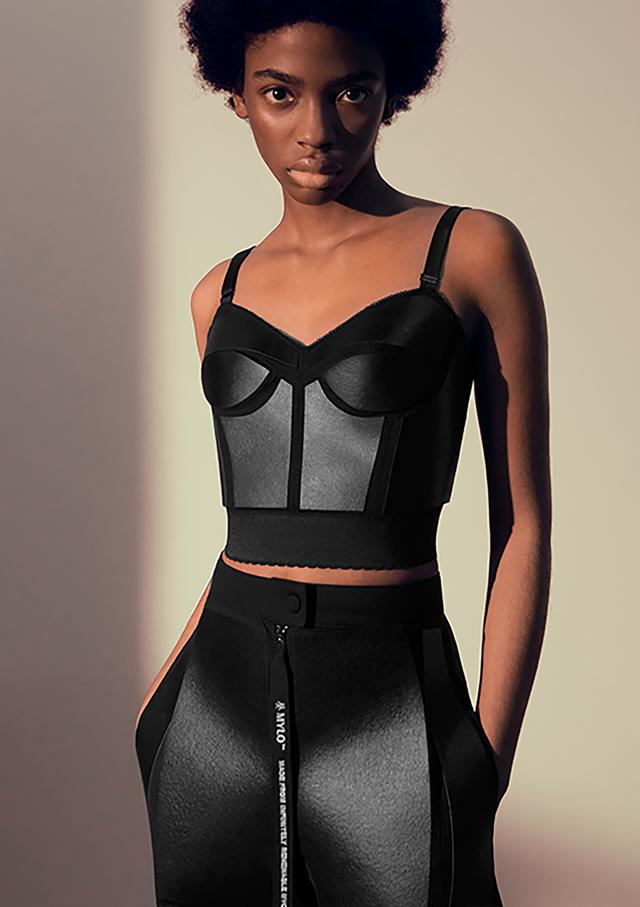Garments based on coffee, flowers and crystallized tears: how biotextiles will revolutionize the future of fashion
At the end of the 18th century, during the first industrial revolution, the textile industry was profoundly disrupted. The invention of the spinning machine marked the beginning of a technological and economic transformation that completely changed the forms of production. Fast forward to the present, where we are experiencing the industrial revolution 4.0, marked by the automation and digitization of factories, the question of where textile development is headed is more important than ever.
Textile innovation , apart from the obvious reasons linked to productivity and functionality, is a sine qua non condition for reducing the environmental impact of the fashion industry . According to the World Economic Forum, fashion production is linked to 10% of global carbon dioxide emissions and is the second largest consumer of water globally, due to the dyeing of fabrics and the cultivation of cotton. At the same time, since the year 2000, the production of clothing has doubled and consumers today buy 60% more clothing even if they keep it half the time . The result? The equivalent of a garbage truck full of clothing is burned or thrown away every second in the world.
However, possibilities are beginning to emerge with great advances in the field of textile innovation focused on the development of materials with great scalability potential. Driven by changing consumer interests, increased regulation and increased investment in research and development, according to joint research by The Business of Fashion and consulting firm McKinsey, these new developments are moving from being the exception to becoming in the norm. From fabrics made from food industry waste to lab-made alternatives to leather and silk, fashion's horizons are expanding in search of reducing its environmental impact and increasing the functionality of its fabrics in a sustainable way. .
organic waste
One of the most renowned textile innovations from organic waste belongs to the Italian company Orange Fiber, which manufactures fabric from the derivatives of the production of citrus juices . The fabric, which is mixed with silk, cotton and elastane to provide the properties of twill, poplin and jersey, was used in a collaboration with the traditional fashion house Salvatore Ferragamo and in H&M's "Conscious Exclusive Collection 2019".
A similar alternative to this proposal is that of Nanollose, an Australian biotechnology company that developed a substitute for rayon from cellulose generated from the fermentation of liquid organic waste and, with an approach based on functionality, the Taiwanese company Singtex launched S -Coffee, a textile that is produced with the combination of polyester and coffee oil, which is extracted from discarded ground coffee , and which has drying properties, UV protection and odor control.

Within this production model, one of the most popular materials is vegan bio-leather. Among the companies that work with this alternative are Vegea, with a textile made from grape bagasse, a surplus from the wine industry , which was used by firms such as Serapian, Le Coq Sportif and & Other Stories in shoes and handbags; Frumat, the developer of Pellemela, a textile that is made with the fiber, cellulose and sugars from apple skin discarded after the production of juices and compotes, and Ananas Anam, the Piñatex company, a product made from apple leaves. pineapple .
fungi and bacteria
The mycelium , the network of hyphae that makes up the vegetative part of the fungus, is one of the materials most frequently used in the development of alternatives to leather, better known as “mushroom leather”. Among the genres offered on the market are Reishi by MycoWorks, customizable through modifications made to the fungus during its growth process and popularized by a bag made in collaboration with the French house Hermès, and Mylo by Bolt Threads, recently employed in a new edition of the popular Adidas Stan Smith, and in garments by the English designer Stella McCartney. A similar material is Zoa bioleather, developed by Modern Meadow, which is made from fermented yeast collagen.
Spiders, milk, dung and flower petals
Among the most innovative materials used for the development of biotextiles are those discovered by the English researcher Alice Potts, who used flower petals to create sequins and crystallized human sweat and tears in accessories in collaboration with the Australian brand Mimco and in ornaments for her garments.
Perhaps with a more scalable alternative but still out of the market, Mestic, the bioplastic that the designer Jalila Essaïdi used in the development of viscose and other types that generally use petroleum derivatives, is made with cow manure . In turn, Essaïdi is also experimenting with creating a bulletproof textile by combining the structure of human skin with spider silk.
Although these textile experiments are still in their prototype stage, they set a precedent when it comes to evaluating the universe of possible alternatives in the development of XX. As for the fabrics sold on the market and coming from unexpected materials, there is the biosynthetic silk of the American company Bolt Threads, made from spider silk proteins, famous for its appearance in the collaboration of Adidas and Stella McCartney and Q Milk's 10% cow's milk and 80% sheep's wool felt.
KEEP READING:
From Adidas mushroom sneakers to Michael Kors' incursion on Broadway: the latest world fashion must-seesJo Vera: transgressive design for a freer and more sustainable fashionZero waste and plantbased: the story of an Argentine designer who is committed to sustainability